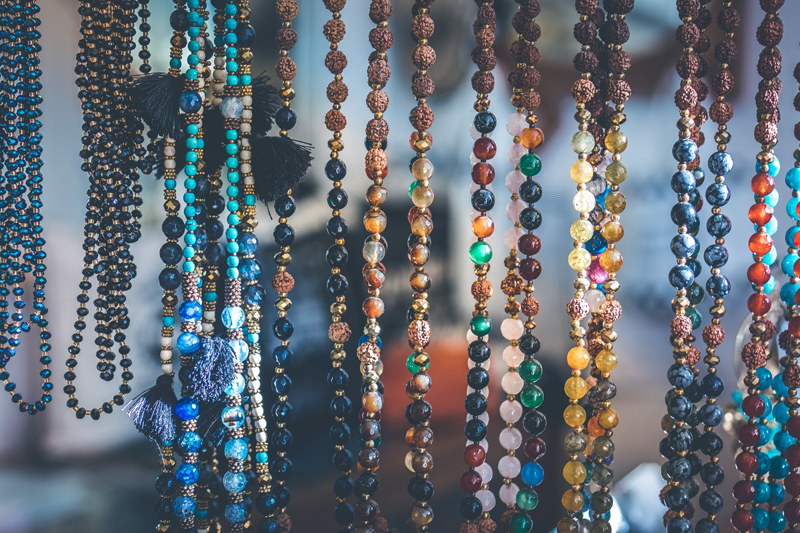Analogous Colors and Bargello Amulet Bag Pattern


Analogous means that things are similar in ways that make things clearer in comparison. It has the same root as analogy.
In color theory, an analogous palette is one that features colors next to each other on a color wheel.

A standard analogous palette counts primaries, secondaries and tertiary colors. A split analogous skips a color going to the next one instead. So a 6 color rainbow could be broken into any 3 colors that are next to each other. Split analogous palettes should be balanced in favor of the middle color for the best effect.

They can be as exciting and energetic as complementary colors

Using the tertiary colors makes for shaded color palettes that are frequently found in nature. The example at the top of this article uses blue/blue-green/green for an ocean effect. Blue/violet blue/violet looks like the colors of the sky at twilight and red orange/orange/yellow orange looks like fire.


It's a great color palette, and you can break it down even further to create gently shaded ombre effects.
For the above examples, here are my Delica suggestions:
For the ocean colors-
DB-046 Silver Lined Light Green
DB-149 Silver Lined Aquamarine
DB-047 Silver Lined Sapphire
For the split analogous- I switched up bead finishes here too for a lot of fun.
DB-602 Dyed Silver Lined Bright Red
DB-249 Lined Crystal Purple
DB-161 Opaque Orange AB
For the fire colors-
DB-045 Silver Lined Orange
DB-043 Silver Lined Red/Orange
DB-042 Silver Lined Gold
The pattern is part of a bargello amulet bag pattern. It's done in 2-1 drop peyote and has an odd count flap. Click HERE for the pattern, then your back button to come back here.
Check out the other articles in my color series to learn more about picking a palette!
You Should Also Read:
Triadic Colors
Complementary Colors
Monochromatic Colors

Related Articles
Editor's Picks Articles
Top Ten Articles
Previous Features
Site Map
Follow @shala%5Fbeads
Tweet
Content copyright © 2023 by Shala Kerrigan. All rights reserved.
This content was written by Shala Kerrigan. If you wish to use this content in any manner, you need written permission. Contact Shala Kerrigan for details.







